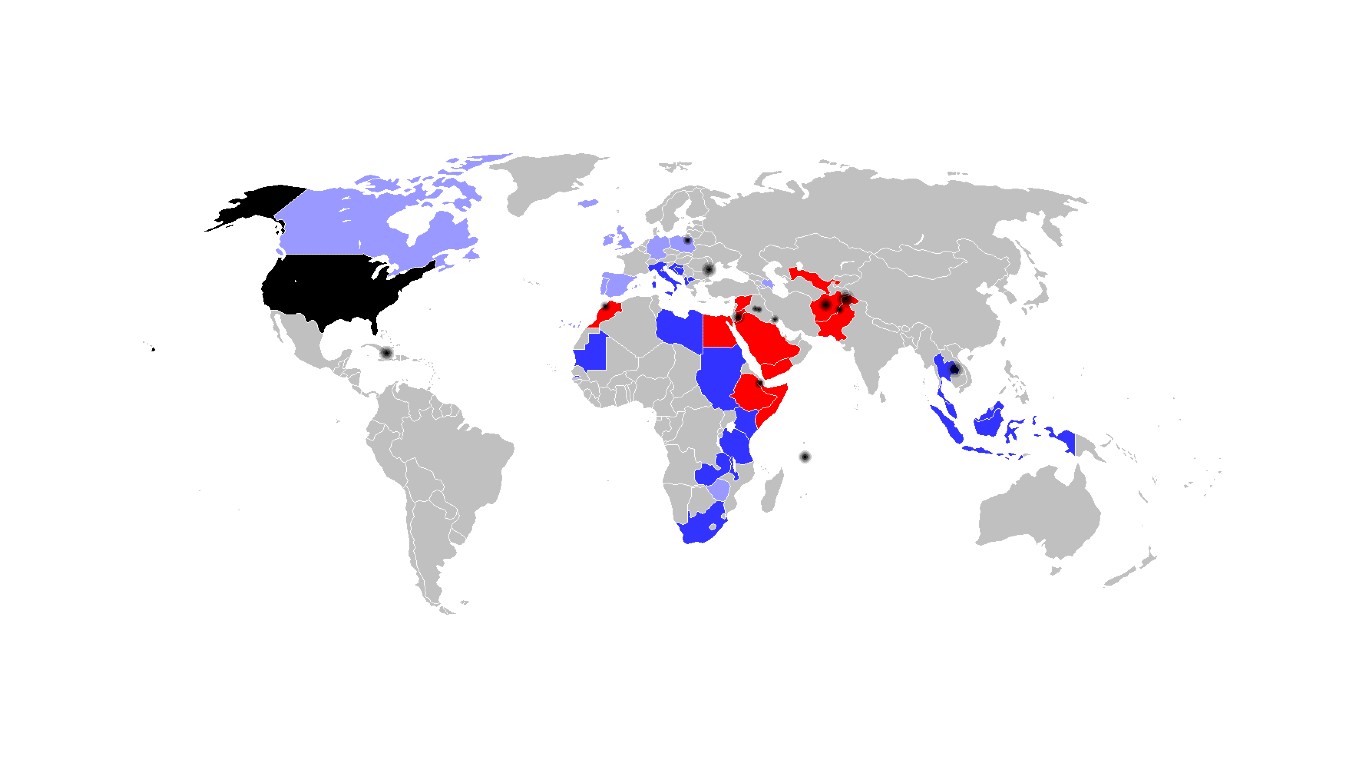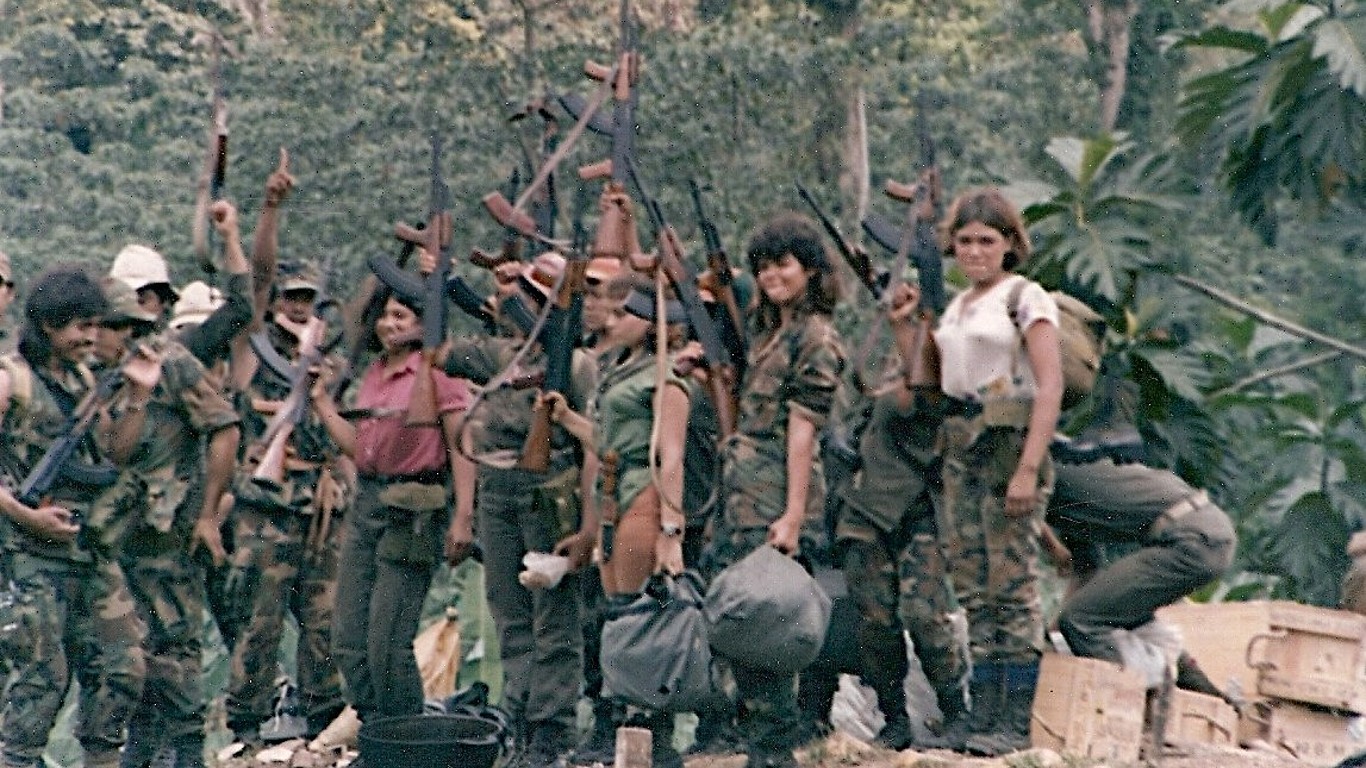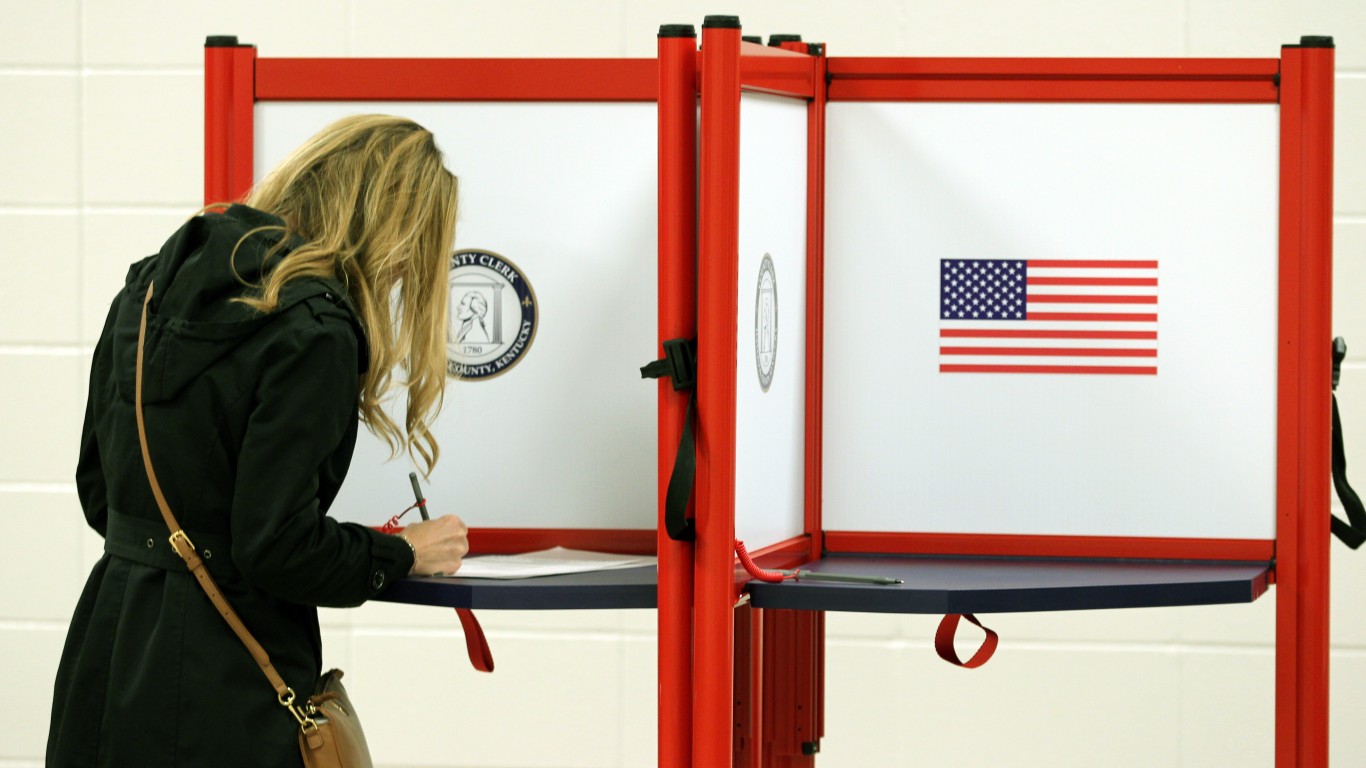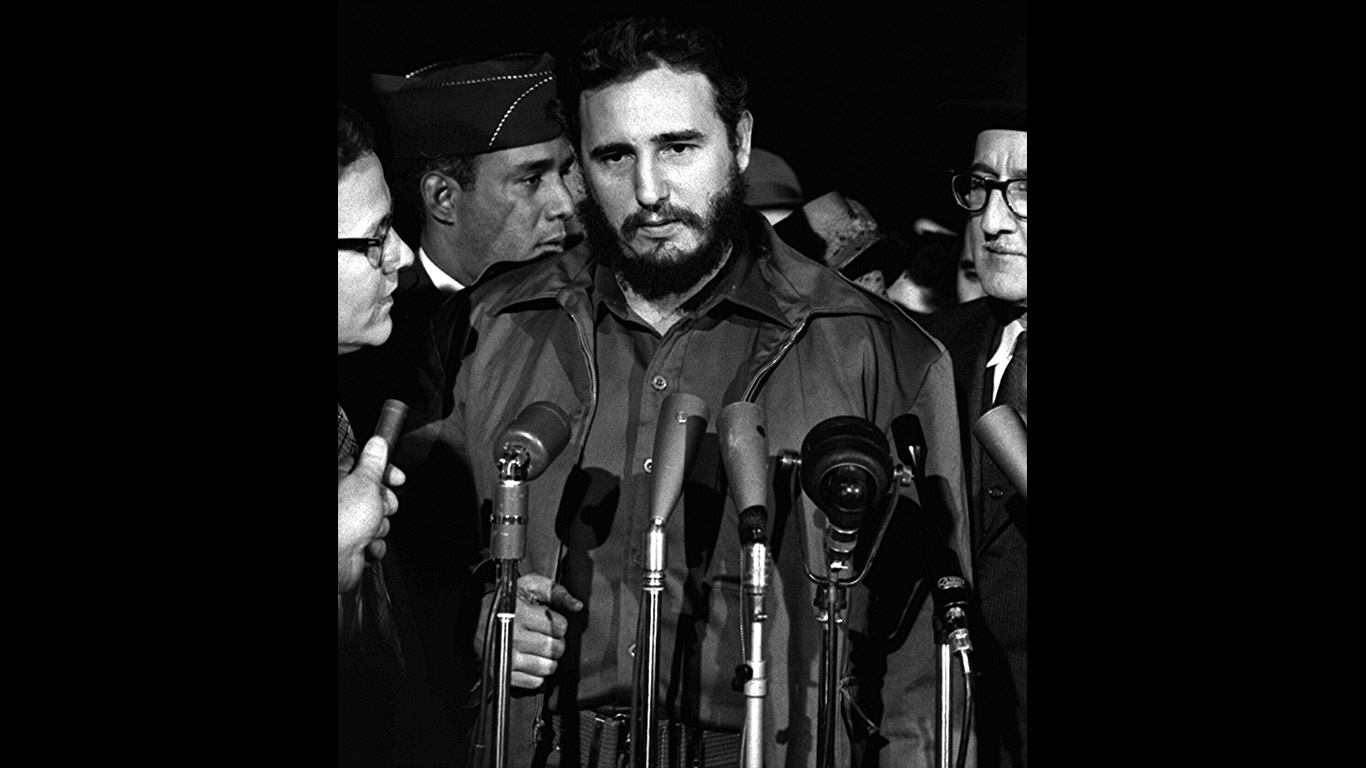
From its roots in the World War II-era Office of Strategic Services, which was tasked with gathering foreign intelligence and coordinating activities behind enemy lines, the Central Intelligence Agency’s aim has been to manage and implement clandestine activities abroad in the name of national security. (Did you know that the U.S. government is involved in secret wars in 15 countries?)
Although the agency claims to be bound by the Constitution and laws of the United States, including treaty agreements and international obligations, the CIA has been involved in many controversial and downright illegal activities, including torture and other human rights violations, assassination attempts on foreign leaders, covert paramilitary activities, and keeping secrets from Congress.
To find scandals involving the CIA and contentious operations of the spy agency, 24/7 Wall St. poured over historical and media sources as well as declassified Senate, CIA, and other government agencies’ documents. The list is far from being comprehensive, but rather attempts to reveal a variety of contentious operations, many of which ended up being thoroughly investigated by Congress.
From the agency’s inception in 1947, it has had a hand in the toppling of foreign governments and regimes that the United States deemed dangerous due to their communist or nationalist leanings. Some of the leaders it has helped depose, however, have been democratically elected leaders, while the CIA has also helped instate numerous dictators.
Despite the initial fears of many Americans, including military leaders and politicians, that the CIA’s lack of transparency countered the ideals of democracy, the organization’s conjunction with the beginning of the Cold War may have swayed public opinion toward the need for such an agency.
Aside from meddling in foreign governments, the CIA’s other offenses have involved the illegal imprisonment of foreign nationals, mind control experiments conducted on unwitting test subjects, and domestic spying, including mass surveillance on American citizens and illegal data gathering. These are the most famous spies in history.
Click here to see 16 of the most outrageous operations in CIA history.

Project Mockingbird
> When: 1963-1965
> What: Domestic wiretapping
New York Times military correspondent Hanson Baldwin revealed in a report in 1962 classified information regarding U.S. and Soviet military operations. The Kennedy administration ordered the FBI to tap Baldwin’s home phone and a secretary’s office phone in an attempt to uncover his sources. After columnists Robert S. Allen and Paul Scott also published articles containing classified material, Kennedy asked for the CIA’s involvement to uncover the sources of the high level leaks, and Project Mockingbird began. Allen and Scott were monitored and wiretapped by the CIA. Other reporters were likely also monitored.
According to declassified documents of the 1975 Commission on CIA Activities, the agency was successful in finding some of the sources of the classified information leaked to the journalists.
[in-text-ad]

Operation Mockingbird
> When: 1950 till unknown
> What: Use of media
This alleged CIA operation that began during the Cold War was used to manipulate the media to promote certain agendas and anti-communist messages. Media networks and journalists, both domestically and abroad, as well as student magazines and organizations, were put on the CIA payroll to fabricate stories and censor news about CIA meddling in foreign governments. Alternately, the operation also allegedly recruited journalists to gather foreign intelligence and transfer messages to and from spies in communist countries.
Extraordinary rendition
> When: 1995 till unknown
> What: Extrajudicial transfers of detainees to another country for interrogation
Extraordinary rendition is the extrajudiciary transfer of foreign nationals suspected of terrorism to detention centers in other countries where illegal and inhumane interrogation methods may be applied. This program began during the presidency of Bill Clinton, when several suspected terrorists were transferred from Croatia, Albania, and Bulgaria to Egypt, where they were tortured and in some cases executed without trial.
After 9/11, this program expanded dramatically. At least 136 people have been detained in this way by the CIA (although this figure is likely much higher), and in several of those, the CIA abducted the wrong people due to simple mistaken identity.

Enhanced interrogation
> When: 2001-2009?
> What: Torture of all kind – physical, sexual, psychological
After 9/11, the Bush administration approved a torture program that defied the Geneva Conventions, labeling the program with the euphemism “enhanced interrogation.” Torture methods used against suspected terrorists – some of them innocent people – included waterboarding, beating, sleep deprivation, threatening to harm the detainee’s family members, cold conditions, and sexual assault.
Rather than providing useful information, the tactics produced many fabricated stories. A Senate committee later determined that the enhanced interrogation methods were ineffective.
[in-text-ad-2]

Black sites
> When: 2001 till unknown
> What: Secret prisons run by the CIA on foreign soil, often used for enhanced interrogation
Although black sites were first acknowledged by President George W. Bush in a 2006 speech, these secret prisons were likely built shortly after 9/11 and were used to detain, question, and ultimately torture suspected terrorists. Known black sites existed in Afghanistan, Lithuania, Morocco, Poland, Romania, and Thailand.
One site in Afghanistan known as “Salt Pit” or “Cobalt” was referred to as the “Dark Prison” or the “dungeon” by prisoners. Detainees there were kept in pitch blackness with loud music blaring. One detainee at the Salt Pit, Gul Rahman, died of hypothermia after being chained to a concrete floor nearly naked for days.
Operation Condor
> When: ’70s-’80s
> What: Support of dictatorships in Latin America
Operation Condor was a network of eight South American military dictatorships that utilized secret police agencies to coordinate attacks against political opponents of their regimes, even across national boundaries. Their tactics included kidnapping, rape, torture, and murder of dissidents, guerillas, and suspected enemies. The CIA knew and likely supported the military coups or right-wing governments of Argentina, Chile, Uruguay, Bolivia, Paraguay, Brazil, Peru, and Ecuador during this time with money, weapons, and training.
[in-text-ad]

Operation Bloodstone
> When: post WWII
> What: Recruiting Nazis as spies
According to declassified documents, the CIA and other U.S. agencies employed at least a thousand Nazis as Cold War spies and informants in the years after World War II. Many former Nazis were used as anti-Soviet assets, while their potential participation in war crimes was overlooked.
As recently as the 1990s, government agencies, including the FBI, have concealed ties to some of these agents still living in the U.S. and refused to cooperate with investigations into suspected Nazis, even encouraging prosecutors to drop investigations into former Nazi informants and spies.

Iran-Contra
> When: 1985-1987
> What: Involved in the administration’s arms sales to Iran, which was under embargo
In the midst of the bloody Iran-Iraq war, Iran was desperate for weapons. Despite a U.S. trade embargo, the Reagan administration secretly sold weapons to Iran for $30 million, in exchange for help in the release of American hostages being held by Iranian-backed terrorists in Lebanon. Adding to the scandal, $18 million from the arms deal was secretly used to support Nicaraguan anti-communist Contras that were battling the communist Sandinista government.
Apart from violating the embargo on Iran, the deal also violated the government’s ban on paying ransom for hostages. On the other side, the deal violated Congress’ legislation limiting CIA and Defense Department aid to the Contras.
Drug trafficking
> When: WWII to Afghanistan
> What: CIA involvement in global drug trafficking
There have been several allegations that the CIA facilitated smuggling lines for cocaine, heroin and other drugs in several nations worldwide. The most explosive allegation – that the CIA had a hand in creating the inner-city crack cocaine epidemic, and had siphoned funds to the Nicaraguan Contras – was made by reporter Gary Webb of the San Jose Mercury News in 1996. A congressional investigation largely disproved that allegation, while also admitting that the CIA had dealt with and possibly protected or turned a blind eye to drug trafficking among the Nicaraguan Revolutionary Democratic Alliance.
[in-text-ad-2]
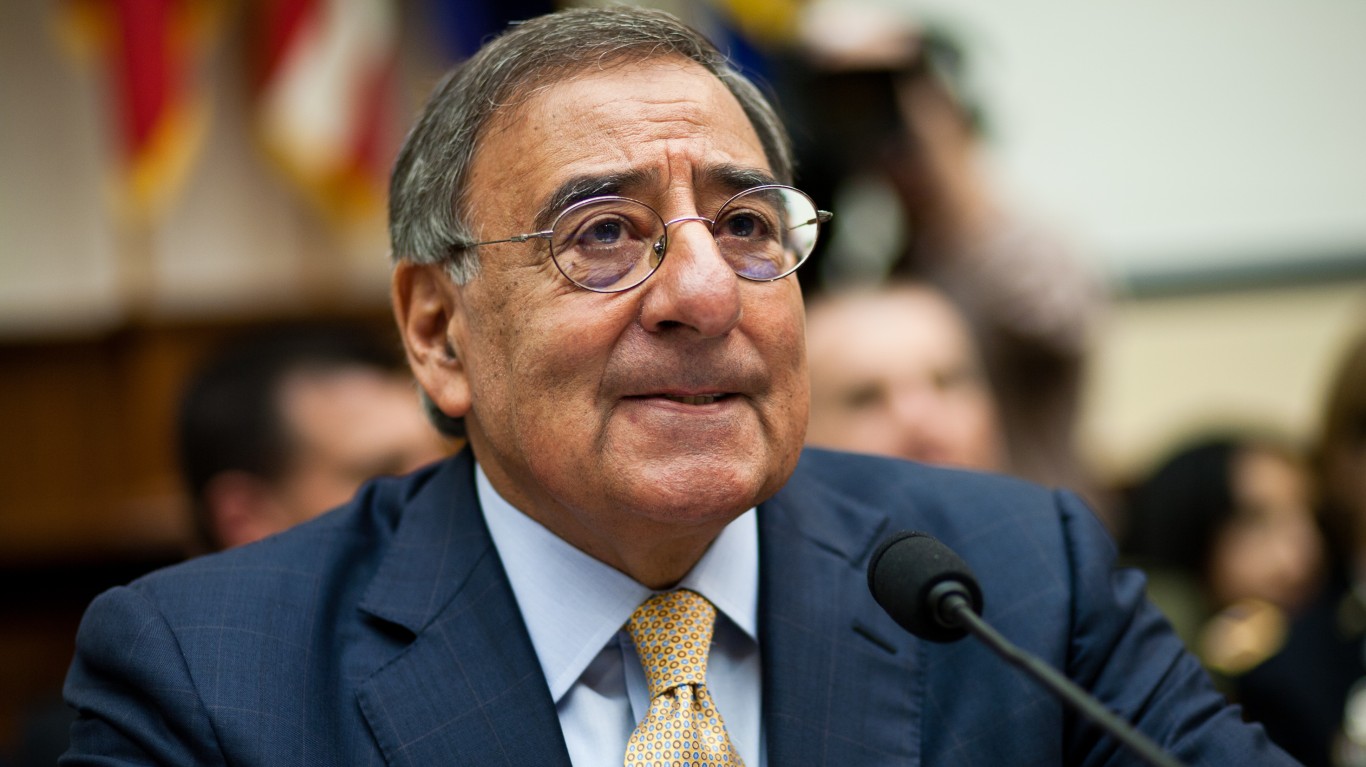
Deceiving Congress
> When: 2001-2009?
> What: CIA deceived Congress on several issues, specifically its enhanced interrogation program
In 2009, CIA director Leon Panetta gave a secret testimony admitting that the CIA had concealed significant actions from Congress in the previous eight years. Although no details were released about what was concealed, a Senate Intelligence Committee report in 2014 concluded that the CIA misled the government and the public for years about the success of its brutal interrogation program. The coverup included attributing the retrieval of key information from detainees to the agency’s torture methods, when in fact the information was given up before harsh interrogation began.

Involvement in the Democratic Republic of the Congo
> When: 1960s till unknown
> What: Likely facilitated the regime of kleptocrat dictator Joseph Mobutu
As African nations gained freedom from colonial powers during the Cold War, the CIA set about to minimize Soviet and communist influence across the continent. During this time, the agency supported the rise of the Congolese dictator Mobutu against the democratically elected nationalist prime minister, Patrice Lumumba. Despite proof that the CIA plotted to assassinate Lumumba by poisoning, it is unclear whether the agency funded the secessionists who eventually executed him. Mobutu ended up being one of the most enduring dictators in Africa.
[in-text-ad]
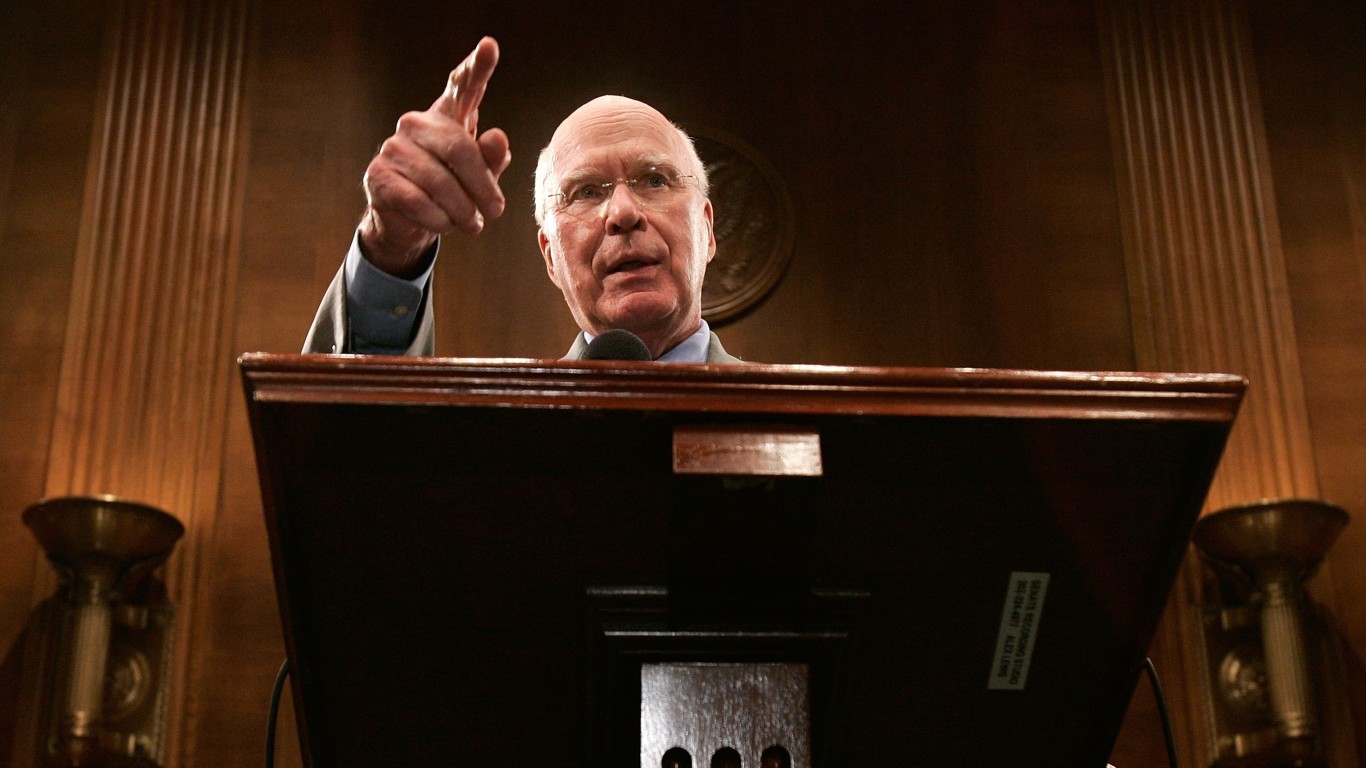
Warrantless surveillance
> When: 2020s
> What: Two new CIA data collection efforts
According to two U.S. senators, Ron Wyden and Martin Heinrich, the CIA has again been collecting data on Americans without warrant. This comes after a U.S. court ruled that the surveillance disclosed by whistleblower Edward Snowden in 2013 was illegal. Domestic spying is prohibited in the CIA’s charter, yet a 2021 government watchdog report details that a program of mass surveillance is again underway, without any oversight from Congress. Details on the nature of the data being gathered are currently unavailable.

MK-Ultra
> When: 1953-1973
> What: Mind control experiments
Convinced the communists had discovered a method for mind control, the CIA embarked on its own secret program to discover such techniques. The human experiment program, MK-Ultra, included psychological and covert drug experiments on willing and unwitting subjects. Techniques included verbal abuse and harassment, sleep deprivation, electroshocks, barbiturates, methamphetamines, and LSD.
Prisoners and psychiatric patients – including pregnant women – in the U.S., Japan, Germany, the Philippines, and Canada became victims of these often inhumane experiments, which involved decimating a person’s mind and sense of self to induce a “blank slate.” A number of test subjects died, and many were damaged for life.

Operation Ajax
> When: 1953
> What: Helped overthrow a democratically elected government in Iran
After Iran planned to nationalize its oil industry, British intelligence and the CIA orchestrated and financially backed a military coup that overthrew the democratically elected government of Iran headed by popular Prime Minister Mohammad Mosaddeq and reinstated the Shah of Iran, Mohammad Reza Pahlavi.
To thank the U.S. for its role in his return to power, the Shah then signed over 40% of Iran’s oil fields to U.S. companies. The coup precipitated a surge in nationalism that would ultimately lead to the 1979 Iranian Revolution and the establishment of the country’s Islamic republic.
[in-text-ad-2]

Plots to assassinate Cuba’s leader Fidel Castro
> When: 1960 till unknown
> What: Failed assassination attempts on Fidel Castro
According to the Church Committee, a 1975 Senate subcommittee that chronicled abuses by various government agencies, the CIA planned and attempted numerous plots to assassinate Cuba’s leader Fidel Castro. The plots included poisoned cigars, an exploding seashell that would be painted colorfully to attract Castro (who was an avid scuba diver), and hiring various people to kill him, including mobsters and even one of his paramours. While some ideas were abandoned as impractical, others were carried out and failed.
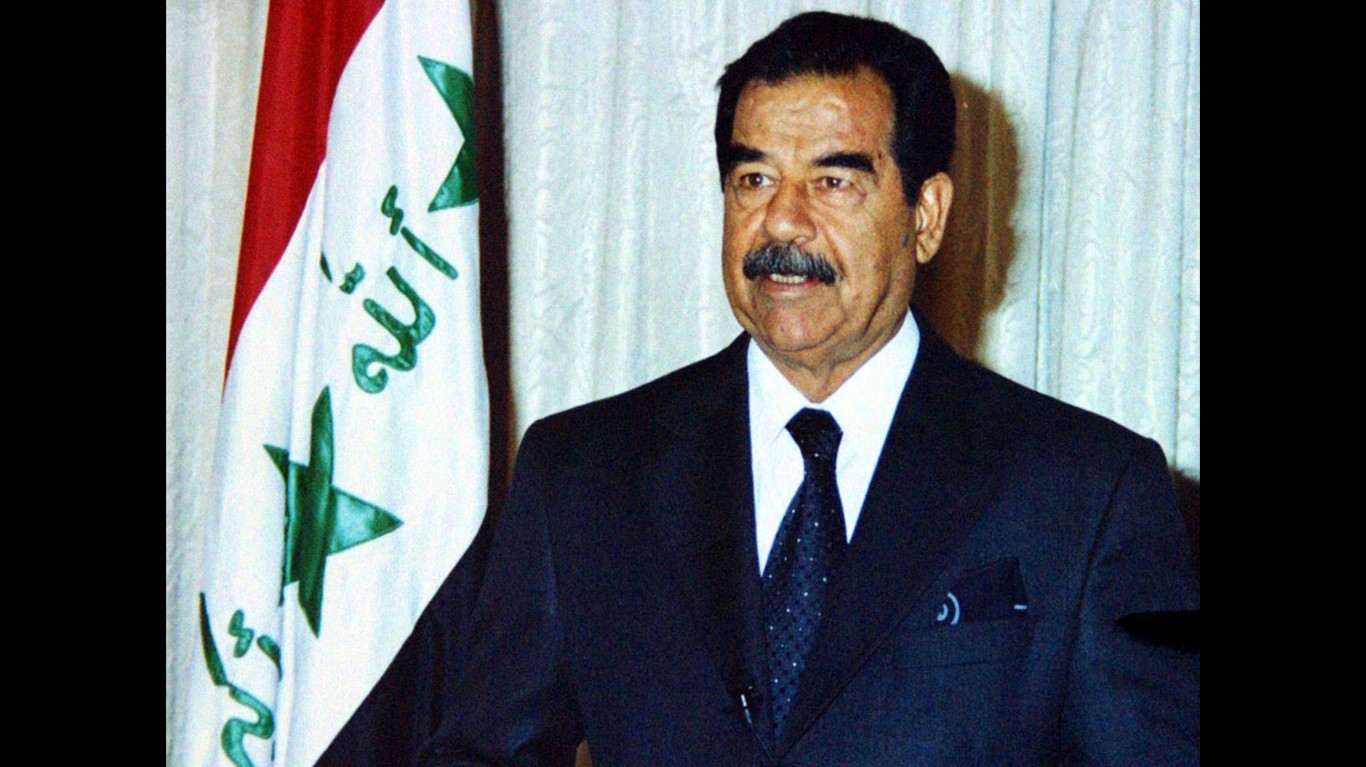
Assassination attempts and “targeted killings” of foreign leaders
> When: 1950s till unknown
> What: Assassinations of foreign leaders
After the CIA’s involvement in several assassinations and assassination attempts of foreign leaders – including Dominican dictator Rafael Trujillo, Indonesian president Achmed Sukarno, and Chilean general Rene Schneider – were exposed in the ’70s, President Gerald Ford signed an executive order forbidding such actions.
Though these interferences often ended up with undesired consequences, the CIA continued them and simply changed the terminology to “targeted killing.” Further actions included aerial bomb attempts on Libya’s Muammar Gaddafi in 1986, Serbia’s Slobodan Milosevic in 1999, and Iraqi President Saddam Hussein in 2003.
Travel Cards Are Getting Too Good To Ignore
Credit card companies are pulling out all the stops, with the issuers are offering insane travel rewards and perks.
We’re talking huge sign-up bonuses, points on every purchase, and benefits like lounge access, travel credits, and free hotel nights. For travelers, these rewards can add up to thousands of dollars in flights, upgrades, and luxury experiences every year.
It’s like getting paid to travel — and it’s available to qualified borrowers who know where to look.
We’ve rounded up some of the best travel credit cards on the market. Click here to see the list. Don’t miss these offers — they won’t be this good forever.
Thank you for reading! Have some feedback for us?
Contact the 24/7 Wall St. editorial team.
